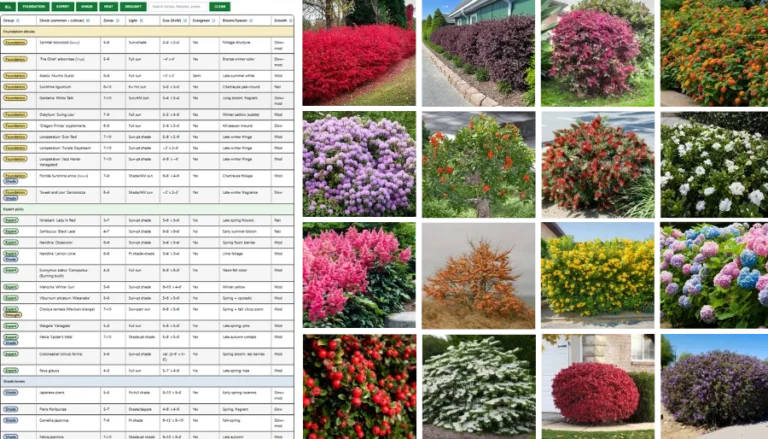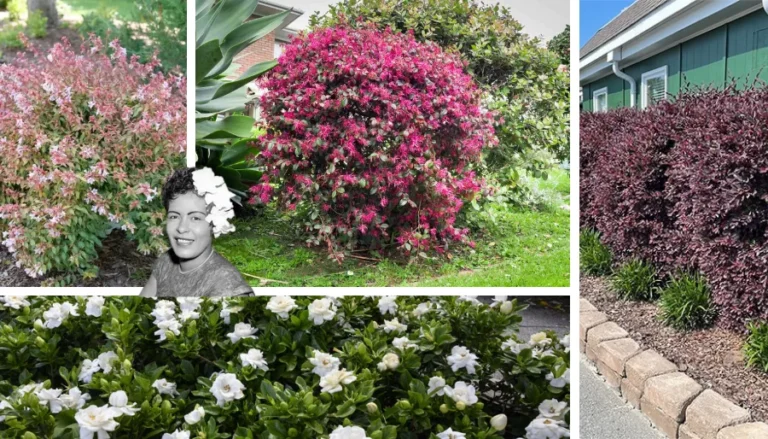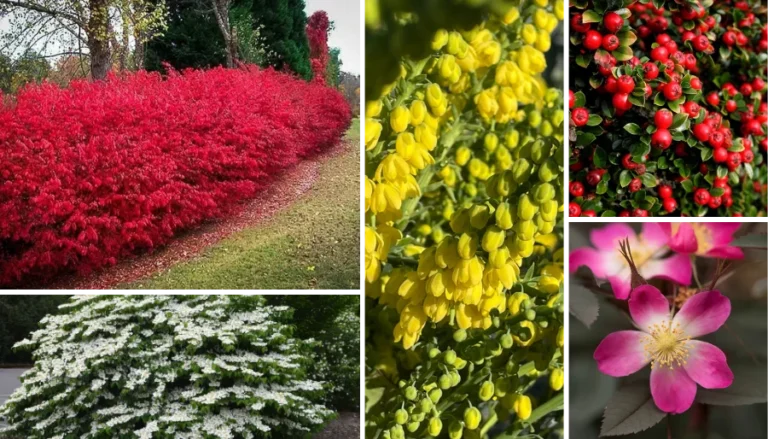Ignite your smoking experience with a dash of curiosity and a sprinkle of exploration! While the mention of smoking may immediately bring to mind, “marijuana,” there exists a captivating realm of smokable herbs and plants that are not still illegal in many regions.
These remarkable botanicals not only offer legal and safe alternatives, but they also introduce an array of flavors, aromas, and effects that can transform your smoking rituals into extraordinary adventures.
In this enlightening journey, we invite you to unlock the secrets of these smokable treasures. Discover herbs that have been cherished for centuries for their captivating properties, from mild psychoactive effects to soothing aromas that whisk you away to tranquility. Learn about the historical significance of these plants, intertwined with ancient civilizations and traditional practices that have stood the test of time.
Imagine the gentle smoke of Damiana, celebrated for its aphrodisiac qualities, kindling your senses and enhancing your intimate moments.
Picture the soothing and calming effects of Raspberry Leaf, beckoning you to a state of deep relaxation and tranquility. Envision the refreshing burst of Lemon Verbena, infusing your smoking experience with a citrusy zest that uplifts your spirit.
But it doesn’t stop there. Rosemary, Catnip, Lavender, Calendula—each with its unique characteristics and captivating stories—await your curiosity.
Journey through their vibrant histories, from healing remedies of ancient civilizations to their integration into culinary traditions and beyond.
Unlock the secrets of these smokable herbs and plants, growing your own oasis of delightful flavors and captivating fragrances. Unleash your creativity as you experiment with different combinations, blending your own signature smoking concoctions that reflect your unique taste and desired effects.
So, fellow explorer of the senses, step into this enthralling world of smokable wonders. Embark on a journey that transcends the ordinary, as you indulge in the flavors, scents, and experiences that these remarkable herbs and plants have to offer. Let the smoke rise, carrying you to new heights of enjoyment and discovery. Your smoking rituals will never be the same again.
14 Herbs You Can Grow & Smoke
1. Mullein (Verbascum thapsus)
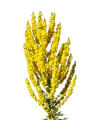
Let’s start with Mullein, a fascinating herb that has been used for centuries as a lung tonic. Its herbal properties make it a perfect choice for smokers looking for a gentle alternative. But that’s not all!
Did you know that Mullein has a historical connection to ancient Roman soldiers? Yes, it is said that Roman soldiers would dip the Mullein leaves in wax and use them as torches during their nighttime battles. Talk about versatility!
When it comes to smoking qualities, Mullein provides an incredibly light and mild smoke, almost like smoking air. Its flavor is virtually undetectable, allowing you to fully savor the other elements of your smoking blend.
As for growing Mullein, it’s surprisingly easy.
This biennial herb can grow up to two feet wide at the base, with flower stalks reaching an impressive six feet or more. Some consider it a garden weed, but don’t let that discourage you. Plant the seeds directly in your garden during spring, preferably in a sunny spot with well-drained soil. Mullein is quite resilient once established, making it a low-maintenance addition to your herbal collection.
2. Skullcap (Scutellaria spp.)

Next up is Skullcap, a perennial herb known for its calming effects when smoked. Its name might sound eerie, but this herb has a lot to offer.
Historically, Skullcap has been used in traditional Chinese medicine and Native American practices for its medicinal properties. Even the famous 19th-century herbalist, Samuel Thomson, praised Skullcap for its ability to ease anxiety and promote relaxation.
When it comes to smoking qualities, Skullcap offers a medium smoke with a fairly neutral flavor.
It’s like the reliable friend who never disappoints. In your garden, Skullcap takes the form of a spreading perennial, growing to about a foot tall and making for an attractive groundcover. To grow Skullcap, start by sowing the seeds indoors in spring, and then transplant the seedlings to a sunny or partly shaded location with nutrient-rich soil.
Keep in mind that Skullcap appreciates regular irrigation during dry periods. As fall approaches, be sure to cut back the dried foliage to the ground, allowing it to rejuvenate for the following season.
3. Coltsfoot (Tussilago farfara)

Next up we have Coltsfoot, an herb that not only offers a light and neutral smoke but also possesses expectorant properties. Coltsfoot has a fascinating historical background as well. Ancient Greeks and Romans used Coltsfoot to treat various respiratory conditions, earning it the nickname “the cough dispeller.” Its distinctive dandelion-like flowers bloom even before the plant’s leaves appear, adding a touch of early spring beauty to your garden.
Coltsfoot is a 6- to 12-inch tall groundcover that spreads through underground rhizomes, forming extensive colonies under favorable growing conditions. To grow Coltsfoot, it’s best to opt for fresh seeds or potted plants available online, as dried seeds have low germination rates. Provide this herb with rich, moist soil and a sunny or partially shaded spot, and it will thrive. Just remember, when using Coltsfoot in smoking blends, be mindful of the concentration to avoid triggering harsh coughing.
4. Mugwort (Artemesia vulgaris)

Let’s dive into the intriguing world of Mugwort, a plant that has been smoked by many ancient cultures to induce vivid dreams. This herb is known to produce a very mild psychotropic effect while you’re awake, making it a fascinating choice for those seeking a unique smoking experience. In fact, Mugwort’s reputation for enhancing dreams is so notable that it was often used by ancient Egyptians and Greeks for divination purposes. So, if you’re looking to add a touch of mysticism to your smoking ritual, Mugwort is the herb for you.
When it comes to smoking qualities, Mugwort offers a light smoke with a pleasant, slightly sweet flavor. It’s like taking a gentle stroll through a fragrant garden. As a plant, Mugwort is a spreading perennial that can reach up to 2 feet in height. To grow Mugwort, it’s recommended to start with a potted plant or transplant a clump from an established patch. Once it takes root, Mugwort requires little care and can thrive even with neglect.
However, be cautious as it has a tendency to become invasive, especially in moist locations. To keep it in check, simply cut back the dried stalks to the ground each fall and watch it flourish.
5. Uva-Ursi (Arctostaphylos uva-ursi)

Now let’s explore the world of Uva-Ursi, also known as kinnikinnick by the Algonquin people.
This native plant has a long-standing tradition of being smoked by Native American tribes for ceremonial purposes. Its rich history and cultural significance make it an herb worth exploring. Uva-Ursi has a medium smoke with a strong earthy flavor, adding depth to your smoking blend.
As a plant, Uva-Ursi is an attractive woody groundcover, reaching a height of about 6 inches. Its low-growing nature makes it a popular choice for landscaping, providing a touch of natural beauty to any garden.
Growing Uva-Ursi can be a bit challenging from seeds, so it’s best to obtain potted specimens from a native plant nursery or online supplier. This plant thrives in full sun or light shade, but excellent drainage is crucial for its well-being. Once established, Uva-Ursi is quite drought-tolerant and requires minimal care, allowing you to enjoy its presence without much fuss.
6. Mint (Mentha spp.)

Ah, the delightful world of mints! Known primarily for their flavor, mints such as spearmint, peppermint, and chocolate mint offer a wide range of options when it comes to smoking blends. These herbaceous perennials not only add a refreshing taste to your smoke, but also provide an invigorating aroma. Additionally, don’t forget to explore close relatives of mint, such as lemon balm with its lemony flavor and yerba buena with its sweet menthol flavor, as they can enhance your smoking experience even further.
Mints come in various species, each with its unique smoking qualities. Some mints offer a light and refreshing smoke, while others have a more robust character. Their versatility allows you to experiment and find the perfect mint variety that suits your taste. As plants, mints are herbaceous perennials that spread to form extensive colonies under favorable conditions. Their rapid growth and ability to fill the air with their delightful scent make them a wonderful addition to any herb garden.
To grow mints, it’s generally easier to start with potted plants or transplant a clump from an established patch rather than growing from seeds. These plants thrive in partial sun and rich, moist soil.
However, keep in mind that mints can become invasive, particularly in moist areas, so confining them to a pot is often a wise choice. Come fall, don’t forget to cut the dried stalks to the ground, allowing them to rejuvenate for the next season’s growth.
7. Sage (Salvia spp.)

Sages are primarily used for their flavor, adding a delightful twist to smoking blends. With varieties like white sage, black sage, and pineapple sage, you have a wide array of options to experiment with. However, it’s important to note that one type of sage, Salvia divinorum, has strong psychotropic properties and is illegal in many states. So, be mindful of the specific sage variety you choose to incorporate into your smoking blend to ensure compliance with local laws.
Smoking qualities of sages vary depending on the species, giving you the opportunity to explore a range of flavors and aromas. From earthy and woody to sweet and fruity, there’s a sage variety to suit every palate. As plants, most sages are shrubby perennials, varying in height from less than 1 foot to over 6 feet. Their distinctive foliage and vibrant blooms make them not only flavorful additions to your smoking blend but also visually appealing elements in your garden.
Growing sage is a delightful endeavor, as these plants prefer full sun and dry conditions. They are quite resilient and can withstand periods of neglect, making them suitable for low-maintenance gardens. To keep your sage plants in optimal shape, consider cutting them back by about 50 percent each fall, allowing for new growth in the coming seasons.
8. Damiana (Turnera diffusa)

Damiana is renowned for its mild psychoactive effects and has been treasured as an aphrodisiac for centuries. It’s the perfect choice for those seeking a relaxed, euphoric state. It also has a long history of traditional use among indigenous cultures in Mexico and Central America. It was believed to have a variety of medicinal properties and was often used in rituals and love potions.
When smoked, Damiana exudes a pleasant aroma and delivers a smooth, enjoyable smoke experience.
Damiana is a small shrub native to Central and South America. It can be grown in well-drained soil and requires a sunny location. With proper care, it produces aromatic flowers and leaves that can be harvested for smoking.
9. Raspberry Leaf (Rubus idaeus)

Raspberry leaves have a rich history in traditional herbal medicine and have been used for centuries to support women’s health and soothe various ailments. They’re also associated with fertility and childbirth.. Smoking raspberry leaf is known for its soothing and calming effects, providing a gentle and delightful smoke.
The smoke of raspberry leaf is smooth and flavorful, making it a popular choice as a base in herbal smoking blends.
These plants are deciduous shrubs that are commonly cultivated for their delicious berries, but the leaves can be harvested and dried for smoking. They prefer well-drained soil and thrive in sunny to partially shaded areas.
10. Lavender (Lavandula angustifolia)
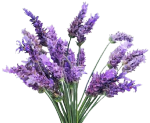
Lavender has been used for centuries for its aromatic and therapeutic qualities. It was popular among ancient civilizations such as the Egyptians, Romans, and Greeks for its fragrance, healing properties, and as a natural remedy for various ailments and is still is celebrated for its calming and aromatic properties. When smoked, it releases a soothing fragrance that promotes relaxation and aids in stress relief.
The smoke of lavender imparts a sense of tranquility and offers a delightful, aromatic experience.
Lavender is a fragrant perennial herb with beautiful purple flowers. It thrives in well-drained soil and full sun. Lavender plants can be cultivated in gardens or containers and harvested for their flowers and leaves.
11. Calendula (Calendula officinalis)

Calendula, also known as marigold, is cherished for its anti-inflammatory and healing properties. This plant has a rich history of medicinal use dating back to ancient times. It was highly regarded for its skin healing properties and was often used in ointments, salves, and herbal remedies. When smoked, it provides a mild and floral flavor, creating a pleasant smoking experience.
Calendula smoke is smooth and gentle, adding a touch of floral elegance to your smoking blend.
Calendula is an annual flowering plant with vibrant orange or yellow flowers. It prefers well-drained soil and full sun. The flowers can be harvested and dried for smoking purposes.
12. Lemon Verbena (Aloysia citrodora)

Lemon verbena is prized for its refreshing lemony scent and uplifting effects and has been used for centuries for its culinary, medicinal, and aromatic properties. It was highly valued by the ancient Incas and Spaniards and was introduced to Europe in the 18th century. Smoking lemon verbena offers a citrusy twist that invigorates the senses and promotes a positive mood.
When smoked, lemon verbena releases a delightful citrus aroma, providing a zesty and revitalizing smoke experience.
Lemon verbena is a perennial shrub with slender, fragrant leaves. It prefers well-drained soil and full sun. Lemon verbena plants can be grown in gardens or containers and harvested for their aromatic leaves.
13. Rosemary (Rosmarinus officinalis)

You undoubtedly know rosemary as a fragrant herb commonly used in cooking, but it also offers other stimulating and invigorating effects. It was even highly regarded by ancient civilizations such as the Egyptians, Greeks, and Romans for its fragrance, culinary enhancements, and therapeutic properties. When smoked, it exudes a woody aroma with hints of pine, adding a touch of herbal sophistication to your smoking ritual.
Rosemary smoke is aromatic and enlivening, awakening your senses with its unique flavor profile.
As an evergreen shrub with needle-like leaves and blue flowers, it prefers well-drained soil and full sun. Rosemary plants can be grown in gardens or containers and harvested for their flavorful leaves.
14. Catnip (Nepeta cataria)

Catnip is famously adored by cats, but it also holds relaxation properties for humans. In fact, it has a long history of traditional use as a calming herb. It has been used for centuries in herbal remedies to alleviate various ailments, including anxiety, insomnia, and digestive issues. Smoking catnip induces a mild sedative effect, helping to promote a sense of calmness and stress relief.
Catnip smoke provides a smooth and soothing experience, allowing you to unwind and find tranquility.
As a perennial herb with aromatic leaves and small white or purple flowers, it prefers well-drained soil and full sun. Catnip plants can be cultivated in gardens or containers and harvested for their leaves.
How to Make Your Own Herbal Smoking Blend
Now that you have an introduction to various smokable plants, let’s dive into the process of creating your own herbal smoking blend. Crafting your blend allows you to tailor the flavors and effects to your personal preferences. Here are the basic steps to get you started:
Harvest fresh, young leaves, preferably in the morning after the dew has evaporated. This ensures the best quality and flavor.
Dry the leaves slowly indoors, avoiding quick drying methods like using an oven. Hanging them in bundles from the ceiling or spreading them out on a window screen allows the leaves to retain a bit of moisture, resulting in a smoother smoke.
Once the leaves are dry, crush them by hand into an even consistency. This will ensure a consistent burn and distribution of flavors.
Combine the dried leaves according to the guidelines below:
More To Discover
- Is Your Container Herbal Tea Garden Providing You with More Herbs Than You Can Use? Time For a Side Hustle!
- Tips On Dealing with Slugs and Snails in Your Garden Without Pesticides or Chemicals
- Mushroom Farming: A Rewarding Hobby for the Green Thumb Enthusiast
- The Best Ways to Attract Beneficial Wildlife to Your Backyard and Garden and Why You Must
- Mullein should form about 50 percent of the mixture, serving as the ideal “base” due to its light and smooth smoke.
- Add several other herbs, such as Mugwort and Skullcap, to create the “body” of the blend. Mugwort contributes a headier smoke, while Skullcap adds its calming effects. Uva-Ursi can also be included to provide a tobacco-like quality. These herbs should constitute about 40 percent of the blend.
- Reserve the final 10 percent of the blend for flavoring herbs, like mints and sages. Experiment with different varieties to find the combination that suits your taste.
- If the blend turns out to be too harsh when smoked, consider spritzing the dried herbs with a spray bottle to reintroduce moisture, creating a smoother experience.
- Store your smoking blend in glass jars or resealable plastic pouches to maintain its freshness and aroma.
By following these steps, you’ll have a personalized herbal smoking blend that caters to your unique preferences. So, unleash your creativity and enjoy the process of crafting your own smokable masterpiece.
Remember, while exploring the world of smokable plants, it’s essential to respect the legal and cultural considerations surrounding their use. Ensure compliance with local regulations and seek advice from medical professionals if needed.
Happy smoking and may your smoking experience be filled with delightful flavors, intriguing history, and moments of relaxation!











